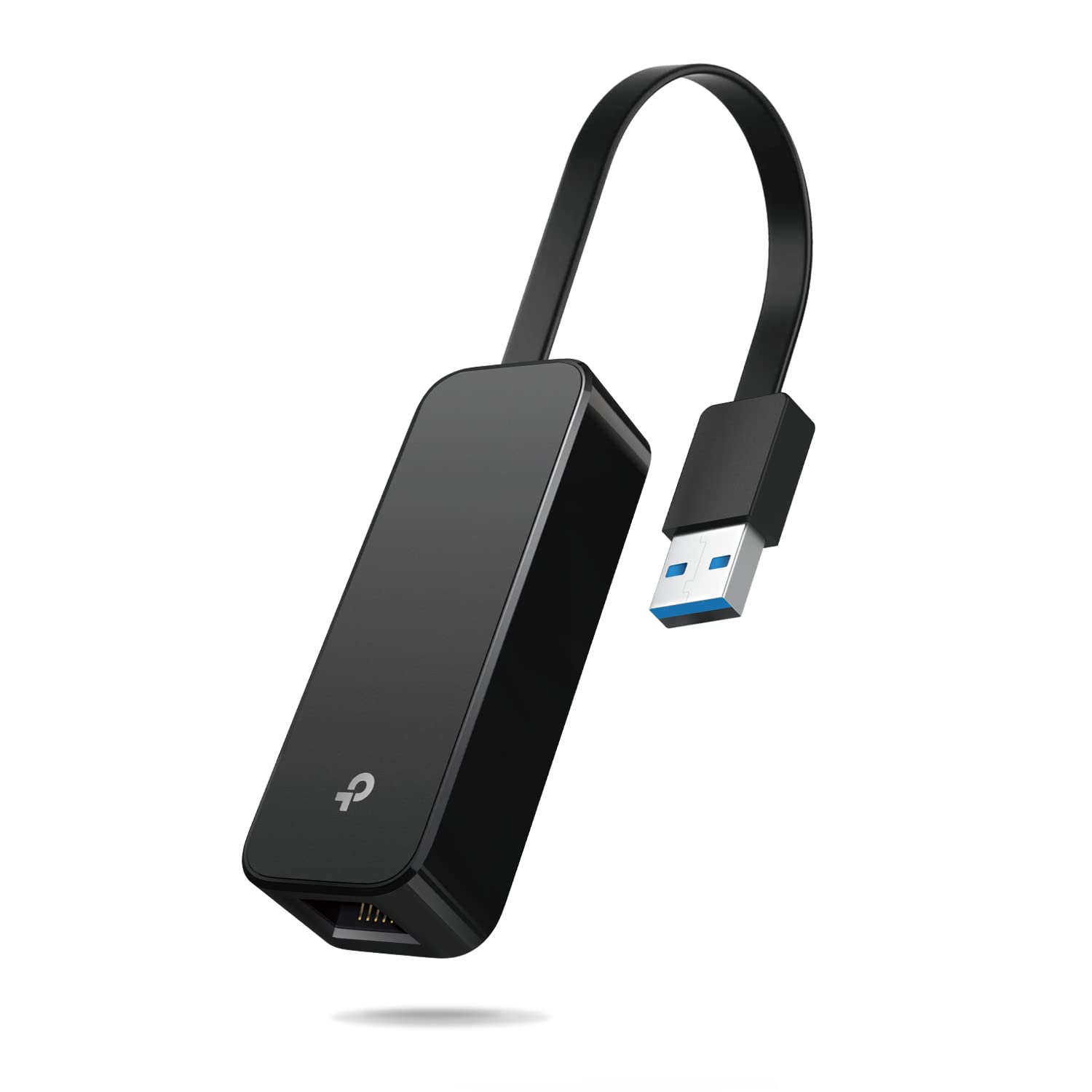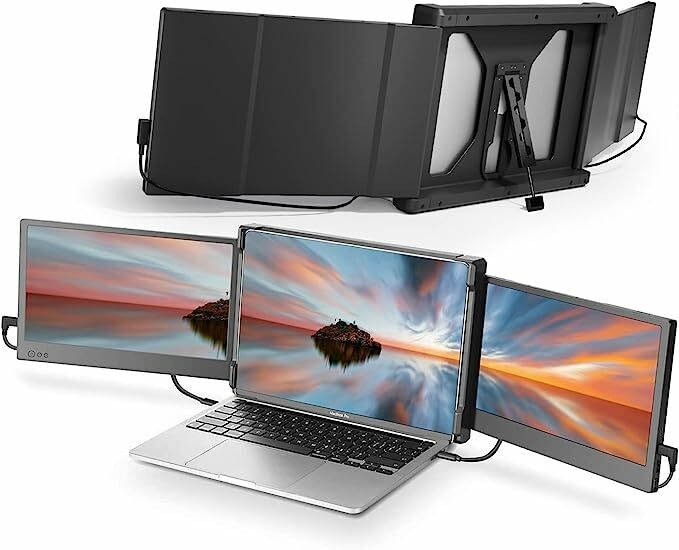Best USB to Ethernet Adapter: Top Picks for Connectivity
USB to Ethernet adapters are a convenient solution when connecting devices without built-in Ethernet ports or upgrading network speeds. With the prevalence of slim and lightweight laptops, manufacturers often sacrifice Ethernet ports, leaving the devices reliant solely on wireless connectivity. A USB to Ethernet adapter bridges the gap, granting users the option for a wired connection when needed.
These adapters come in various form factors and designs, but their primary purpose is to convert a USB port into a wired Ethernet port. The benefits of using a wired connection over a wireless one include increased stability, better security, and faster data transfer speeds. This can be especially important in situations where users need to transfer large files or are participating in activities that demand low latency, such as online gaming or video streaming.
When choosing a USB to Ethernet adapter, it’s essential to consider factors such as USB interface (USB 2.0, USB 3.0, or USB Type-C), compatibility with your device’s operating system, and overall speed capabilities (e.g., Gigabit Ethernet). You might also want to look for specific features like Power over Ethernet (PoE) support if your application requires it.
After extensive research and testing, we have identified the top USB to Ethernet adapters that will enhance your connectivity options and pave the way for seamless, high-speed data transfers.
Best USB to Ethernet Adapters
We have compiled a list of the best USB to Ethernet adapters for your convenience. These top-rated products will ensure reliable and efficient connectivity for all your devices.
TP-Link USB to Ethernet Adapter (UE306)
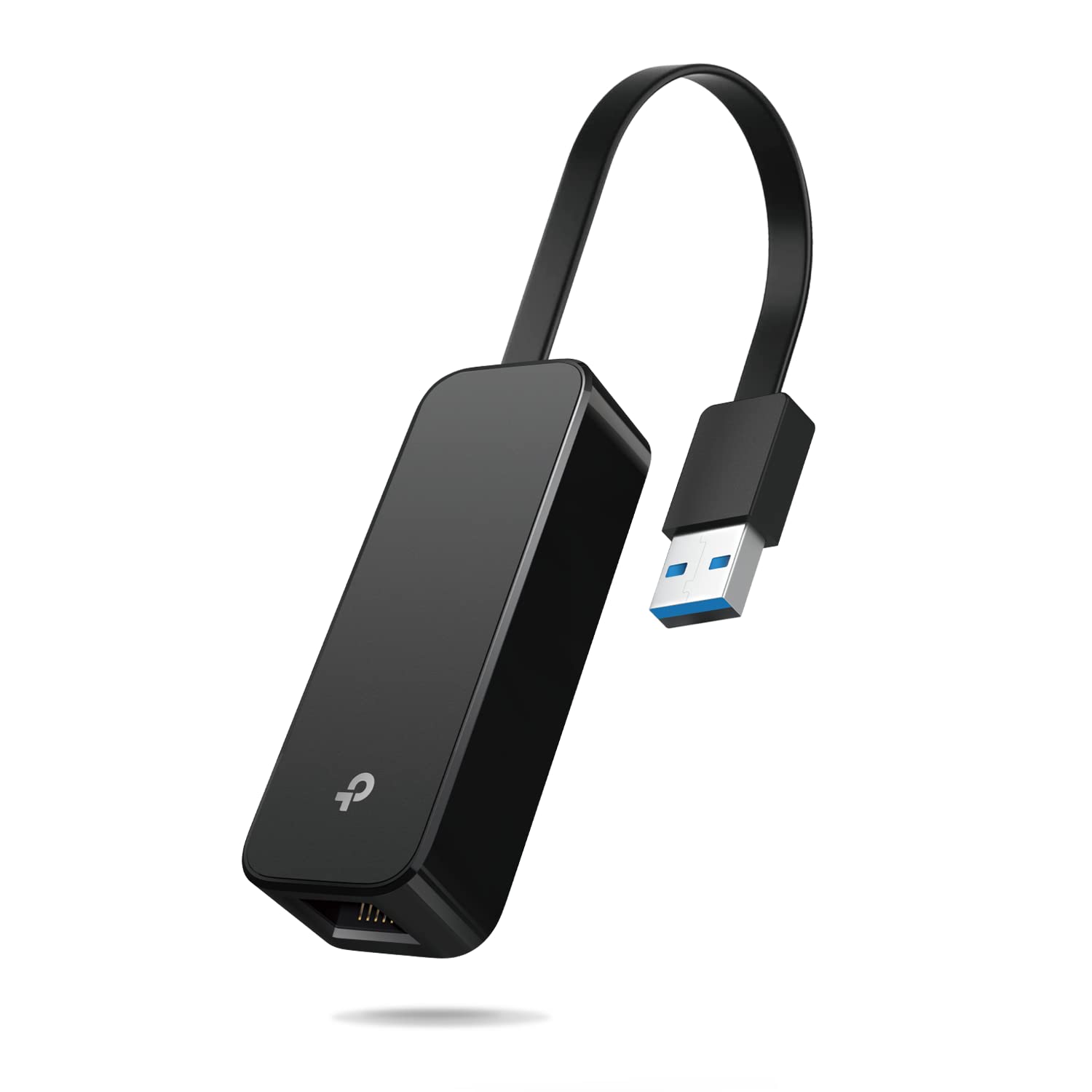
The TP-Link USB to Ethernet Adapter (UE306) is a convenient and reliable option for those looking to enhance their network connection with a portable and user-friendly device.
Pros
- Fast and stable Gigabit networking
- Foldable and portable design
- Wide compatibility with various devices
Cons
- Manual driver installation required for some systems
- Not compatible with Windows RT and Android
- May not be suitable as a permanent replacement for a broken Ethernet port
After testing the TP-Link USB to Ethernet Adapter (UE306), we found it to be an effective solution for connecting our devices to a wired network. The adapter supports Gigabit Ethernet, providing faster and more reliable data transfers compared to most wireless connections. The foldable and portable design is ideal for on-the-go use, making it easy to connect our Ultrabook or Nintendo Switch to a wired network when needed.
Compatibility is an important factor to consider, and the UE306 adapter works seamlessly with a variety of devices, including Windows, Linux, Apple MacBook, and Nintendo Switch. However, it’s essential to note that manual driver installation may be required for some systems, such as Windows 7/8 and macOS up to 12. Additionally, the adapter is not compatible with Windows RT and Android, which may be a dealbreaker for some users.
In conclusion, the TP-Link USB to Ethernet Adapter (UE306) is a handy and efficient device for those in need of a portable wired network solution. Its pros, such as the fast Gigabit networking and wide compatibility, outweigh its cons, making it worth considering. However, be prepared for potential manual driver installation or compatibility issues if you’re using a system outside of its Plug & Play capability.
ABLEWE USB 3.0 to Ethernet Adapter
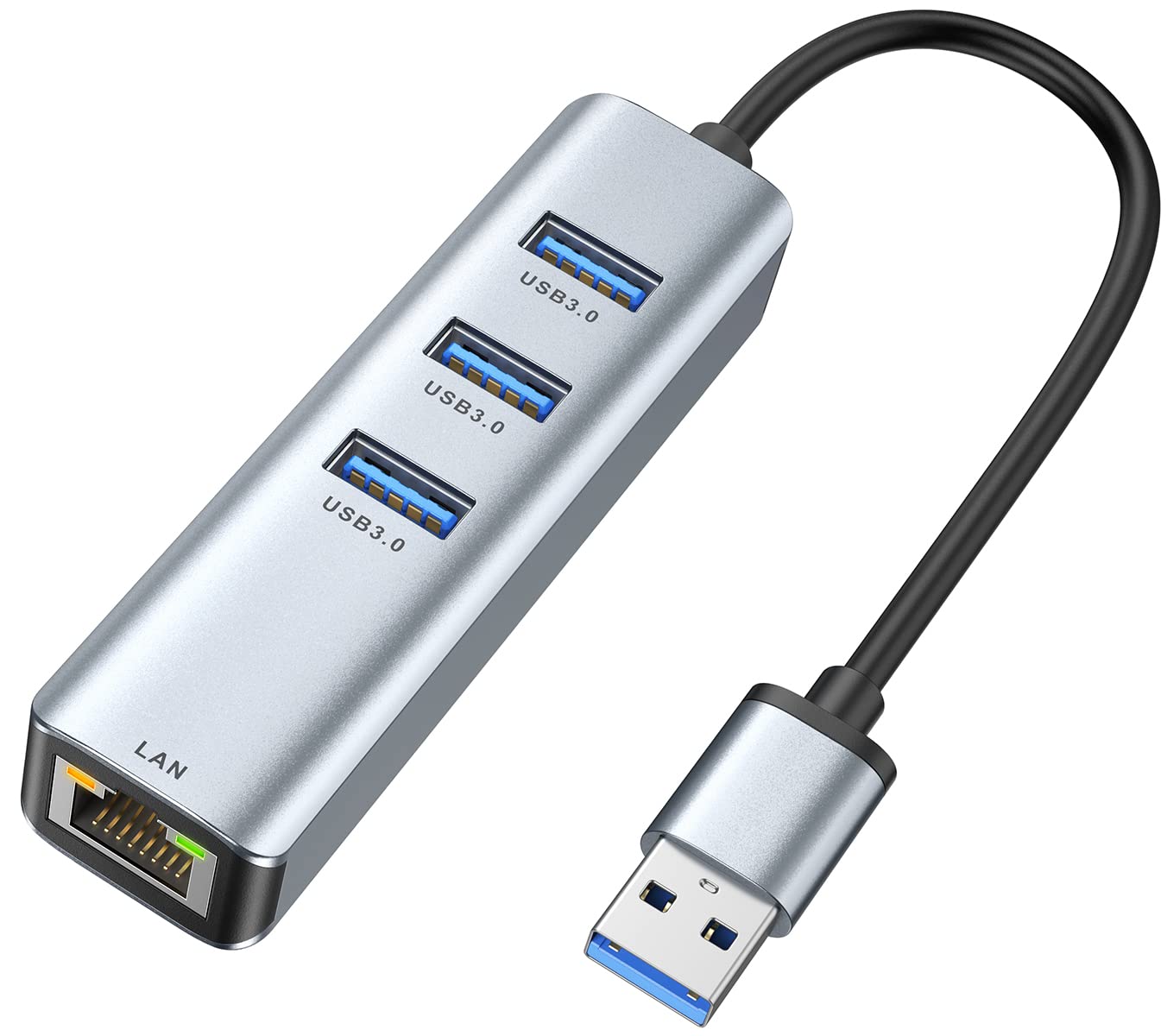
This versatile adapter meets all your connectivity needs while maintaining a reliable performance.
Pros
- Gigabit Ethernet port for fast and stable connection
- 3 additional USB 3.0 ports
- Plug-and-play, compatible with multiple systems
Cons
- May heat up during extended use
- Slightly bulky design
- LAN plug can be a bit tight
We recently got our hands on the ABLEWE USB 3.0 to Ethernet Adapter, and it has made quite an impression. It takes a single USB 3.0 port and expands it to an RJ45 gigabit port along with three additional USB 3.0 ports. The adapter’s plug-and-play functionality allowed us to start using it without the need for installing any drivers, making it the perfect option for those who are always on the go.
During our testing, we found that the adapter’s gigabit Ethernet port provided fast and stable connections. The added bonus of three USB 3.0 ports meant that we could connect multiple peripherals without having to unplug and plug in devices repeatedly. This is a real win for those with limited USB ports on their devices. We tested the ABLEWE adapter on multiple systems, including MacBooks, Chromebooks, and Windows laptops, and found it to work seamlessly across the board.
However, we did notice that the adapter’s body tended to heat up after extended periods of use, which might be a concern for some users. Additionally, the adapter’s design is a bit bulkier compared to other options in the market and can occupy more space on your desk. One minor issue we encountered was the tight LAN plug, though it didn’t affect the overall performance or connection stability.
Overall, the ABLEWE USB 3.0 to Ethernet Adapter is a great choice for people who need fast Ethernet connection and extra USB ports. The device’s compatibility and reliability make it a valuable addition to any workspace. However, if you’re sensitive to heat or prefer a more compact design, you might want to consider other options.
Uni USB to Ethernet Adapter
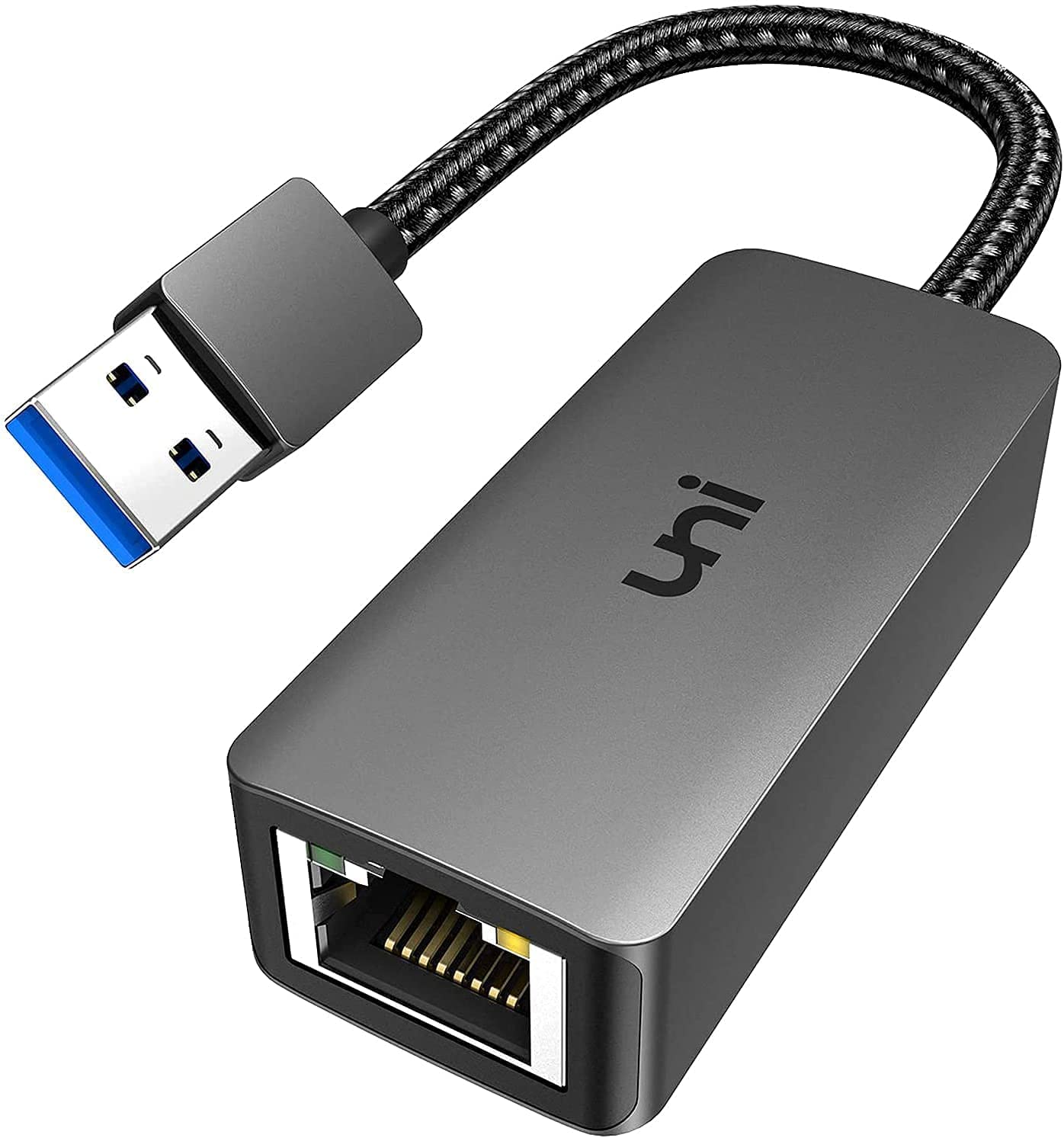
We highly recommend the Uni USB to Ethernet Adapter for its fast transmission, plug-and-play functionality, and overall durability.
Pros
- Fast USB 3.0 transmission
- Easy plug-and-play
- Durable nylon braided cable
Cons
- Not compatible with Nintendo Switch
- Driver required on Windows 11
- Not recommended for TV
We recently tested the Uni USB to Ethernet Adapter and were impressed by its fast transmission speeds. Supporting 10/100/1000 Mbps at USB 3.0 speeds, the adapter ensures smooth and quick browsing even when downloading large files or streaming high-quality videos. Just remember that if you want to reach 1Gbps, you’ll need to use CAT6 or higher Ethernet cables.
One notable feature we appreciated was the plug-and-play functionality. There’s no need for any complicated driver installations on most devices, making it a hassle-free experience to boost our network speed (though a driver is required on Windows 11). The connection was secure and stable, perfect for online classes, video conferences, and gaming on our USB 3.0 devices.
The Uni USB to Ethernet Adapter shows thoughtful design with its built-in RTL8153 intelligent chip for high-speed transmission, snug USB connector for stable signal transport, and a durable nylon braided cable for added flexibility. A premium aluminum casing helps dissipate heat effectively. However, it’s important to note that this adapter is not compatible with Nintendo Switch and not recommended for use with TVs.
For those looking for a reliable, fast, and easy-to-use USB to Ethernet adapter, we believe the Uni USB to Ethernet Adapter ticks all the boxes.
Amazon Basics Aluminum USB 3.0 Gigabit Ethernet Adapter, Gray
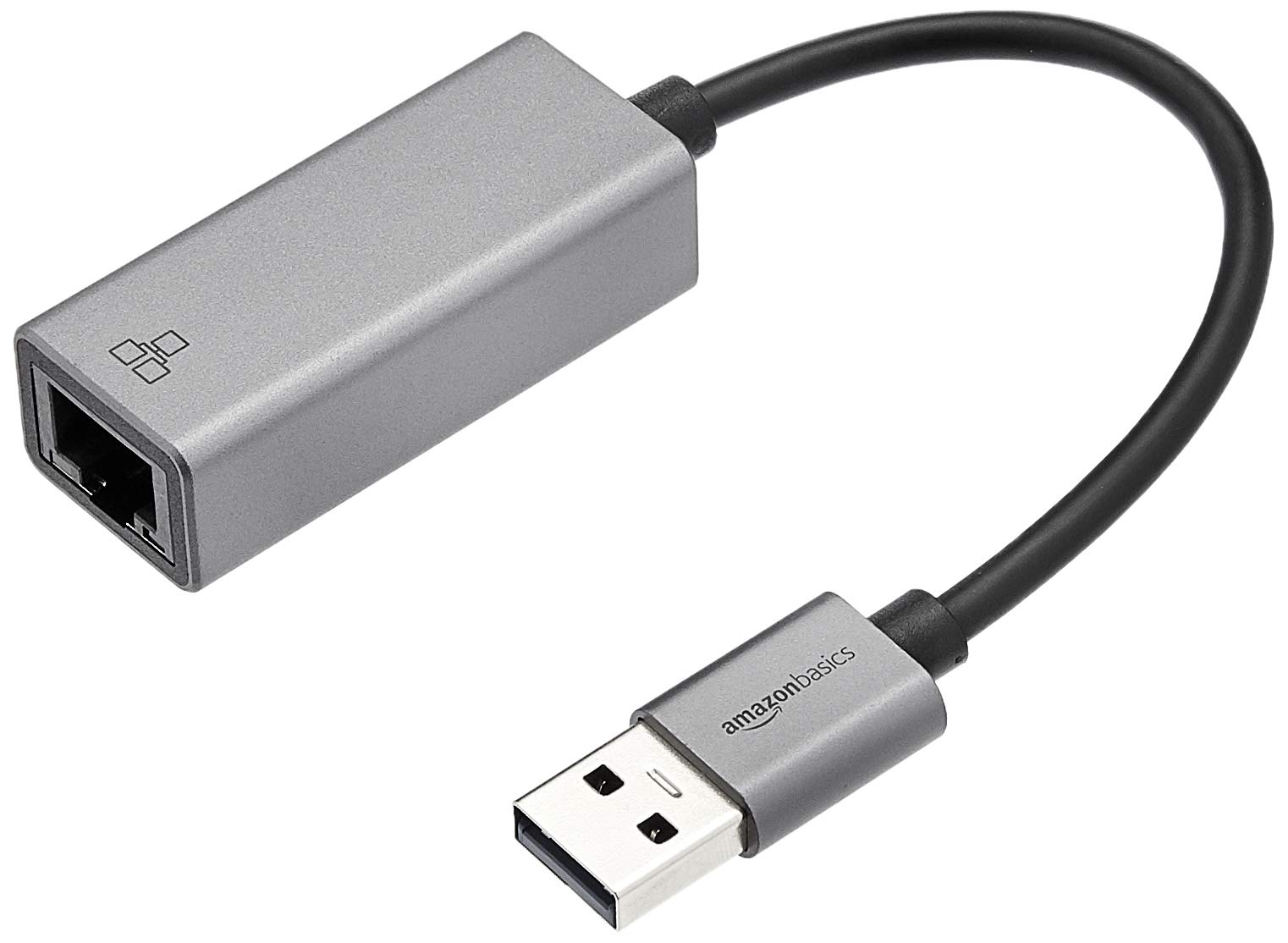
We recommend this adapter for its reliable performance, compact design, and affordable price.
Pros
- High-speed connectivity
- Plug-and-play simplicity
- Portable and lightweight
Cons
- May have compatibility issues with some devices
- Access LED can be too bright
- Short cable length
We recently used the Amazon Basics Aluminum USB 3.0 Gigabit Ethernet Adapter, and we were quite pleased with its performance. The adapter offers high-speed connectivity, supporting 10M/100M/1000M bandwidth, which made our internet connection noticeably faster and more stable. We didn’t experience any lag or buffering when streaming videos or transferring large files.
One feature we particularly liked was the plug-and-play functionality. We found it very convenient, as we didn’t have to install any drivers or software. All we had to do was connect the adapter to our device and it was ready for use. This made it easy to switch between different devices without any hassle.
The adapter’s compact size and lightweight aluminum housing were also significant advantages. We could easily carry it around in our bags or pockets, making it perfect for use on-the-go. However, we did notice that the cable length was a bit short, which could be inconvenient in some situations.
On the downside, we found that the adapter might not work perfectly with all devices. It worked well with most of our laptops, but we encountered a few compatibility issues. Additionally, we noticed that the access LED on the adapter can be quite bright, which might be distracting for some users, especially in low-light settings.
Overall, we believe the Amazon Basics Aluminum USB 3.0 Gigabit Ethernet Adapter offers good value for its price. Its high-speed connectivity, ease of use, and portability make it a useful addition to any device that lacks an Ethernet port. However, users should be aware of its potential compatibility issues and the LED brightness.
BENFEI USB to Ethernet Adapter
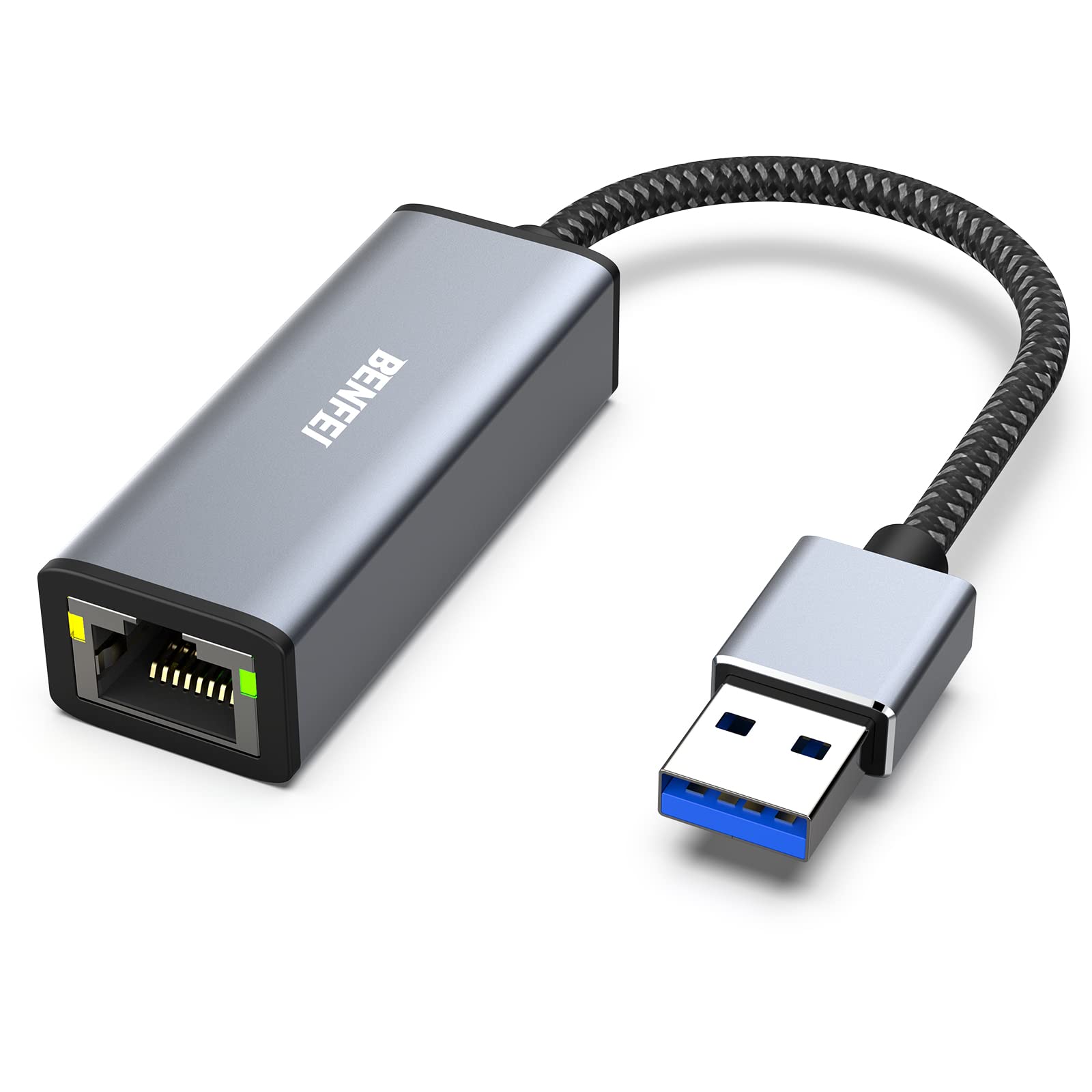
This adapter excels in performance and convenience, providing a reliable wired connection for your devices.
Pros
- Compact design for portability
- Superior stability with built-in IC chip
- Incredible performance with full gigabit ethernet support
Cons
- May require reconnecting on macOS devices
- Not compatible with Windows RT or Android
- No support for USB 1.0 devices
We recently had the opportunity to test the BENFEI USB to Ethernet Adapter, and we have to say, it made quite an impression. The compact design allowed us to easily carry it around and connect it to our devices without any hassle. It was surprisingly straightforward to set up and use, and worked seamlessly with our Windows, macOS, and Linux machines.
One of the standout features of this adapter is its built-in advanced IC chip, which ensures superior stability and offers excellent performance. During our testing, we experienced no hiccups or disconnections, making it perfect for tasks like video conferencing, gaming, and HD video streaming. The adapter supports full 10/100/1000 Mbps gigabit ethernet performance, which means it can handle even the most demanding internet activities.
However, there are a few downsides to the BENFEI USB to Ethernet Adapter. We had to unplug and reconnect the adapter on our macOS devices for it to work at times. Additionally, the adapter is not compatible with Windows RT or Android devices, which may limit its appeal for some users. Lastly, for those still using USB 1.0 devices, this adapter isn’t backward compatible that far.
In conclusion, the BENFEI USB to Ethernet Adapter is an excellent product, offering superior stability and impressive performance for users who need a reliable wired connection. While there are some minor compatibility issues, the pros significantly outweigh the cons, making it a worthy addition to your tech arsenal.
Amazon Basics USB 3.0 to 10/100/1000 Gigabit Ethernet Adapter
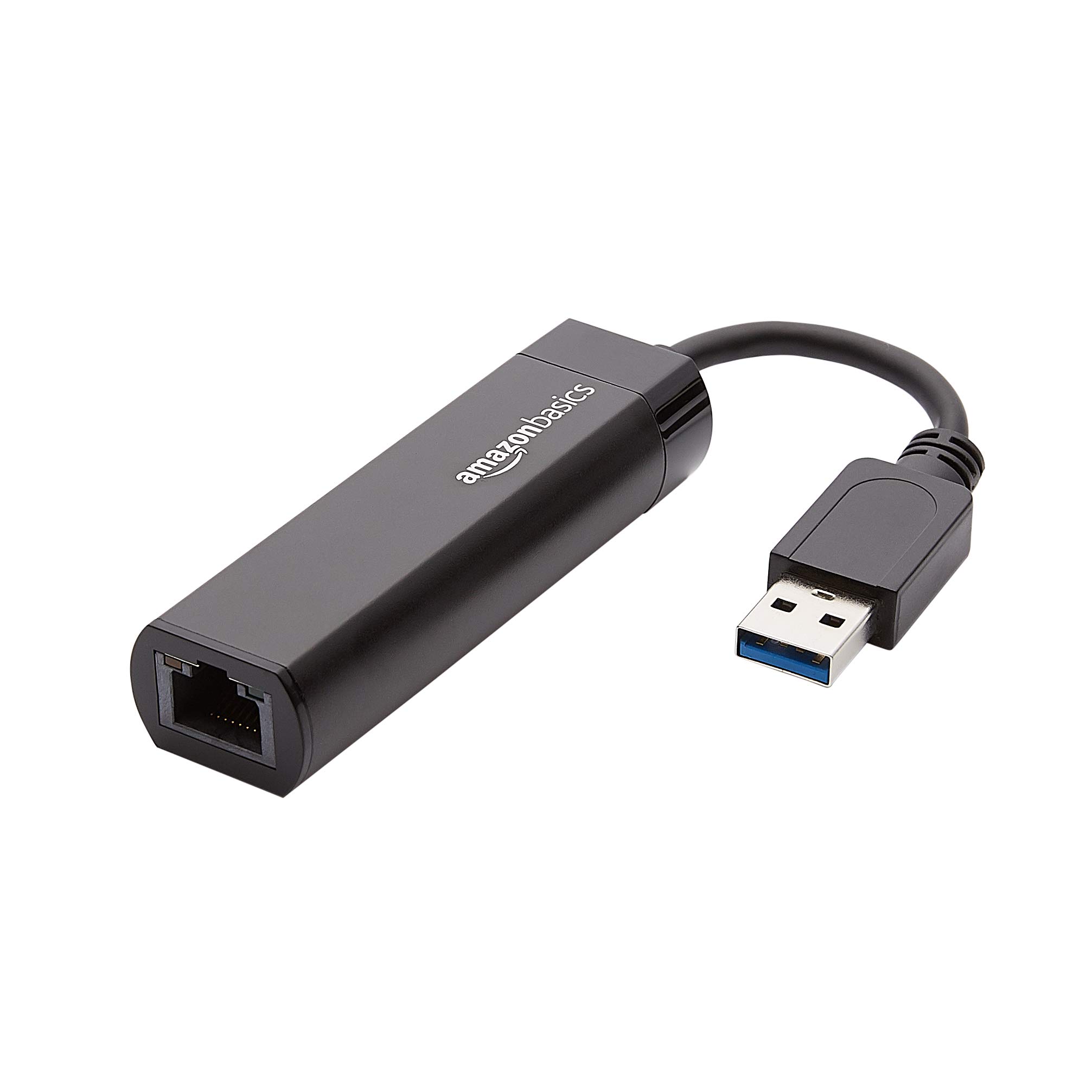
We recommend the Amazon Basics USB 3.0 to 10/100/1000 Gigabit Ethernet Adapter for those seeking a reliable and affordable solution to their network connection needs.
Pros
- Simple plug-and-play functionality
- Green Ethernet & Energy Efficient Ethernet support
- Wide compatibility with Windows systems
Cons
- Not suitable for Smart TVs or gaming consoles
- No MacOS, Chrome OS, or Linux support
- Cannot handle IPv4/IPv6 without CPU load
We recently tested the Amazon Basics USB 3.0 to 10/100/1000 Gigabit Ethernet Adapter, and were impressed by its ease of use and speedy connection. This adapter allowed us to quickly connect our USB 3.0 device to a router, modem, or network switch, delivering Gigabit Ethernet without any hassle.
However, if you’re looking to connect a gaming console or Smart TV, this adapter does not offer support for those devices. The adapter also lacks compatibility with MacOS, Chrome OS, Windows RT, Linux, and Android systems. This may limit some users depending on what devices they own.
On the positive side, we appreciated the adapter’s support for energy-saving features such as Green Ethernet and IEEE 802.3az-2010 (Energy Efficient Ethernet). Nonetheless, users should be aware that this adapter does require Central Processing Unit (CPU) loading when handling IPv4/IPv6 pack Checksum Offload Engine (COE), which may affect device performance.
Overall, the Amazon Basics USB 3.0 to 10/100/1000 Gigabit Ethernet Adapter is a practical and cost-effective solution for users with compatible Windows systems looking to improve their network connection. Keep in mind its device limitations, but for those that it suits, it’s a valuable and simple-to-use option.
TP-Link USB to Ethernet Adapter (UE300)
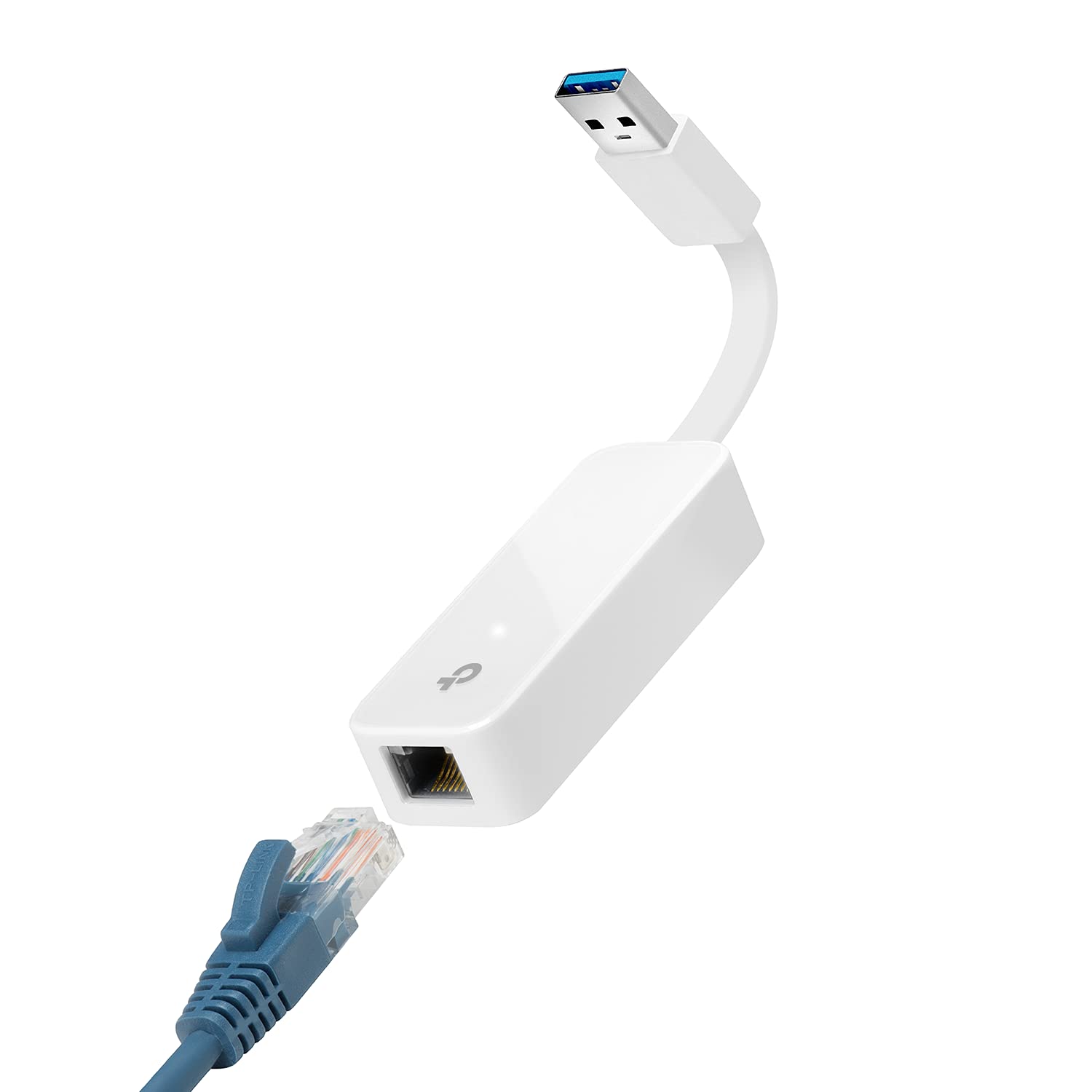
We believe the TP-Link USB to Ethernet Adapter (UE300) is a great choice for those in need of a reliable and portable connection solution.
Pros
- Stable and high-speed Ethernet connection
- Foldable, compact design for easy portability
- Plug and play, easy installation for most devices
Cons
- Not compatible with Nintendo Switch, Wii U, and Wii
- Driver required for Mac OS 10.6 to 10.8
- Warm to touch after extended use
We recently used the TP-Link USB to Ethernet Adapter (UE300), and it efficiently provided a stable, high-speed connection for our devices. As we switched from a wireless connection to this adapter, we noticed an instant improvement in our browsing experience, enabling us to transfer files, play games, and stream HD videos seamlessly.
One of the best things about this adapter is its foldable and compact design. We could easily carry it around wherever we went, and it didn’t add any unnecessary bulk to our laptop bag. Besides, the plug-and-play feature saved us from any complex installation processes; we simply connected it to our laptop’s USB port, and it was ready to use.
However, there are a few downsides to this product. It isn’t compatible with gaming consoles such as the Nintendo Switch, Wii U, and Wii. Also, users with Mac OS 10.6 to 10.8 need to download a driver for it to work. Lastly, we noticed that after extended use, the device became a bit warm to touch – though not alarmingly hot.
Overall, the TP-Link USB to Ethernet Adapter (UE300) is an excellent product for those who want to upgrade their connection and benefit from a stable and speedy internet experience. Its compact and portable design makes it a go-to choice for anyone on the move.
Buying Guide
When it comes to choosing the best USB to Ethernet adapter, there are several factors to consider. In this buying guide, we will outline the essential features to look for, ensuring that you make an informed decision and select the perfect adapter for your needs.
Compatibility is a crucial factor. Make sure the adapter supports your device’s operating system, like Windows, macOS, Linux, or Chrome OS. Some adapters may require driver installations, while others are plug-and-play. Confirm that the adapter you’re considering can accommodate your specific device.
Connection Speeds are important when evaluating USB to Ethernet adapters. They come in varying speeds, including 10/100 Mbps (Fast Ethernet) and 1000 Mbps (Gigabit Ethernet). To take full advantage of high-speed internet connections or local network speeds, opt for a Gigabit Ethernet adapter.
USB Type refers to the USB connector used by the adapter. USB-A, USB-C, and micro-USB are the most common types. Ensure the adapter you choose is compatible with the USB port on your device. Moreover, consider the USB standard associated with the connector (USB 2.0, USB 3.0, or USB 3.1); faster standards will provide better performance.
Durability is an aspect to consider, particularly if you plan to use the adapter frequently or travel with it. Look for adapters with high-quality materials and sturdy construction to withstand regular use.
Portability and ease of use are valuable features if you intend to use the adapter in multiple locations or on the go. Compact designs with foldable or detachable cables prove handy for travel, while indicators for power and data transfer make the adapter user-friendly.
Keep these features and considerations in mind as you shop for a USB to Ethernet adapter. By doing so, you’ll find one that meets your needs and ensures a hassle-free, reliable connection between your device and the Ethernet network.
[content-egg module=AmazonNoApi template=grid]
- About the Author
- Latest Posts
Matthias Böhmichen is the founder of howto-do.it . He is using Linux since 1991 and fell in love with windows a few years later. He likes to discover new technologies, especially hard- and software.
